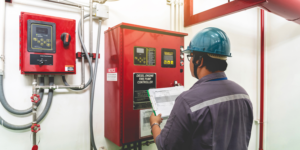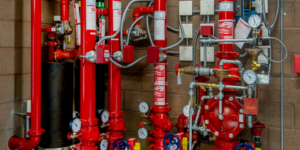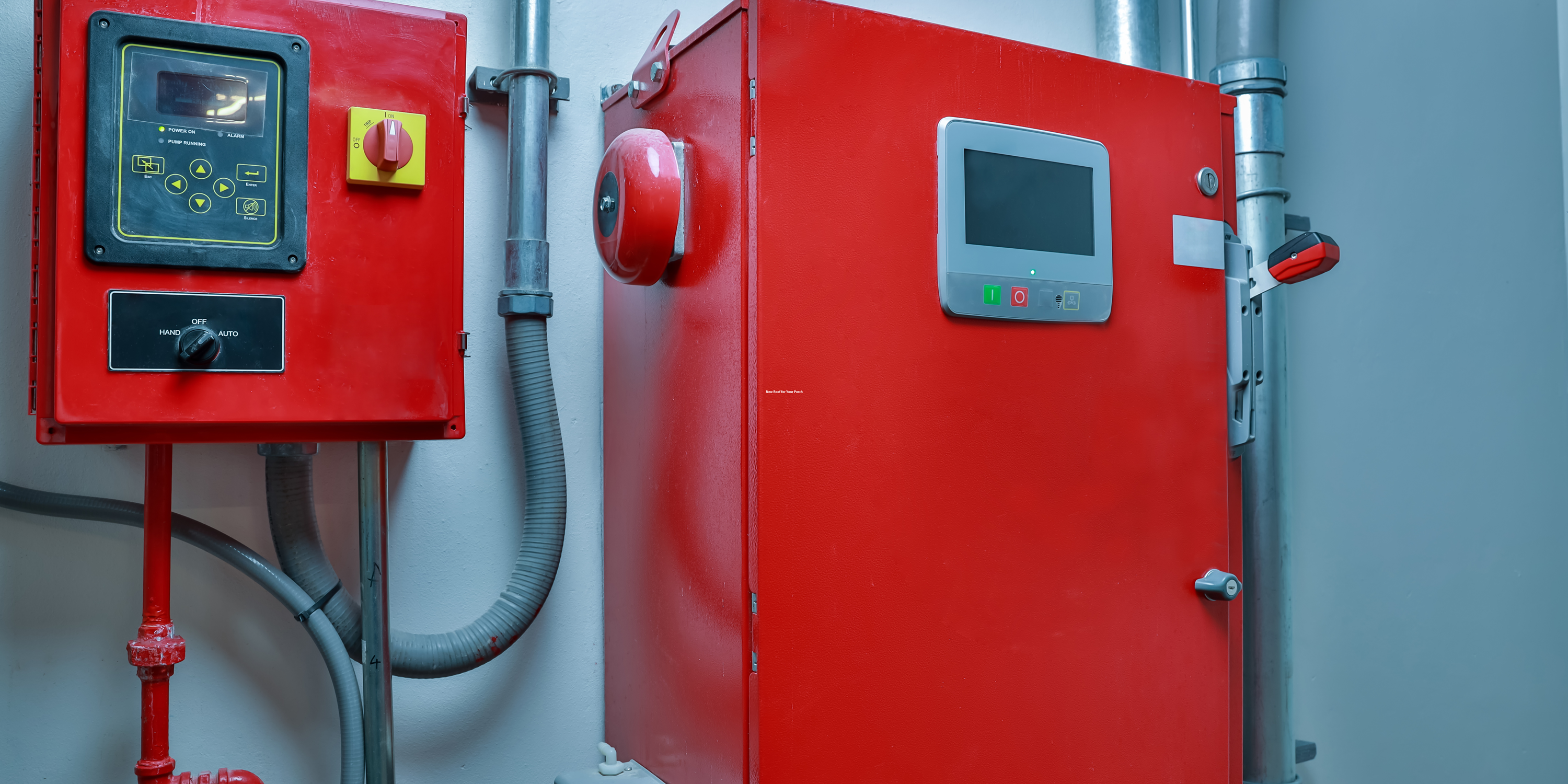Reliable and effective fire protection measures are essential for protecting lives and property. Fire sprinkler systems are crucial to fire protection in buildings of various kinds.
However, like any technology, fire sprinkler systems have had their issues. Improving obsolete designs or limited effectiveness in particular situations is always possible. We’re here today to discuss fire sprinkler technology’s remarkable advances and how they’re improving safety for everyone.
Current Issues and Challenges
Fire sprinklers save lives and property from fires. Despite their importance, various concerns and challenges must be addressed to improve their performance.
Outdated infrastructure is a major issue. Older buildings use outdated fire sprinkler systems that may not fulfill safety regulations. Automatic detection and remote monitoring are rare in these systems, limiting their fire response time.
Another issue is fire sprinkler installation cost myths. Due to perceived high costs, some property owners hesitate to upgrade or install new systems. Understanding that fire losses outweigh the cost of deploying these systems is crucial.
Architectural constraints and building laws can make retrofitting existing buildings with contemporary fire sprinkler technology difficult. For wider adoption, creative solutions must interact effortlessly with different structures.

Advancements in Fire Sprinkler Technology
Recent advances in fire sprinkler technology have transformed how we safeguard our homes and businesses from flames. New improvements have substantially enhanced fire sprinkler system efficiency and efficacy.
Smart fire sprinklers are a huge advancement. These smart devices have heat, smoke, and air pressure sensors. These smart sprinklers automatically extinguish fires when a hazard is recognized.
Advanced extinguishers are another fire sprinkler innovation. Traditional water-based systems control most flames but may not work for electrical or combustible fires. Modern fire sprinklers use foam or gas-based extinguishers to swiftly and efficiently fight various fires.
These improvements increase safety and reduce false alarms by effectively detecting real threats and decreasing unintentional activations.
Benefits of Modernized Fire Sprinkler Systems
Modernizing fire sprinkler systems improves safety and protection for everyone. These technological advances have made fire sprinklers incredibly efficient and effective firefighting instruments.
Modern fire sprinkler systems respond quickly. Advanced detection mechanisms like heat or smoke sensors allow these systems to detect fires and activate sprinklers in seconds. This quick response reduces flame spread, providing residents with more time to exit safely. Modern fire sprinkler systems are accurate and targeted, another benefit.
They evenly distribute water across damaged regions using specialized nozzles to maximize coverage and minimize water damage. Modern fire sprinkler systems are reliable, fast, and accurate. With improved monitoring, these systems can discover problems and malfunctions quickly, allowing for timely maintenance or repairs before they become problematic.
Additionally, new fire sprinkler systems include extensive communication features that allow them to interface with other building infrastructure. Emergency lighting and fire notifications are automated with this integration.
Cost vs. Safety: Debunking Myths
Modern fire sprinkler systems are typically thought to be too expensive for fire safety. It’s not true. Although improving and maintaining fire sprinkler systems costs money, the advantages outweigh the expenses.
A frequent misunderstanding is that retrofitting buildings with fire sprinklers is too expensive. Modern technology makes these installations more inexpensive than ever. Many insurers give large discounts for properties with updated fire suppression systems.
Another cost-versus-safety fallacy is that fire sprinkler maintenance is expensive and time-consuming. These life-saving gadgets need regular inspections and maintenance to work properly. Scheduled inspections and early repairs can help property owners avoid costly repairs or replacements.
Additionally, neglecting to maintain aging or outdated fire sprinkler systems can increase fire emergency risks and liabilities. By prioritizing maintenance, property owners show they care about occupant safety.
Consider the ramifications of inadequate fire sprinkler system protection when weighing expense versus safety. A severe fire costs more than building or maintaining sophisticated firefighting technology.
Debunking assumptions about costs versus safety shows how updating fire sprinkler systems may save lives and provide property owners peace of mind.
The Future of Fire Sprinkler Systems
Technology promises a bright future for fire sprinkler systems. Innovations are improving fire protection to save lives and property.
Smart technology is expected to advance. Imagine a fire sprinkler system that detects smoke or heat and locates fires in seconds. These smart-systems activate surrounding sprinklers and alert emergency personnel for faster response.
Integrating AI into fire sprinkler systems is another fascinating prospect. AI-powered systems can detect fire threats and avert them by evaluating sensor and historical data. This preventative strategy could save many lives and reduce property damage.

Nanotechnology may also improve fire suppression. Nanoparticle-based ultra-fine mist sprays could help put out fires without causing water damage. This equipment could change how we fight flames in sensitive places like museums and server rooms.
Future fire safety systems will also depend on wireless communication networks. Firefighting infrastructure components would be seamlessly connected by these networks for real-time monitoring and control.
Conclusion: Importance of Updating and Maintaining Fire Safety Measures
In today’s fast-paced, ever-changing environment, safety precautions that protect lives and property are essential. Fire sprinkler systems reduce fire damage, but they must be updated and maintained.
Updating and maintaining fire safety measures is crucial. Modern fire sprinkler systems improve with technology. We can make everyone safer by adopting fire sprinkler technology.
We can prevent fires from spreading quickly by fixing typical fire sprinkler system faults like restricted coverage and slow response times. Water mist systems and improved detection technology have reduced fire damage.
Modern fire sprinkler systems have many benefits. They reduce injuries and deaths by responding sooner. More precise water direction during a fire emergency reduces collateral damage and loss. Advanced systems are ecologically friendly and more reliable and efficient.
Real-world case studies show how updated fire sprinkler systems work in hospitals, businesses, warehouses, and residential buildings. These success stories show how updating equipment saves lives and reduces property damage costs.
The expense vs benefits of improving fire safety systems is a prevalent misperception. However, neglecting maintenance or using outdated technology that may fail in an emergency could result in death or extensive property damage, so safety should always be prioritized over initial investment concerns.
Looking ahead, fire sprinkler system advancements offer hope for even stronger fire protection. Fire safety can be made more proactive and efficient with AI-powered monitoring software or smart sensors connected with building management systems.
